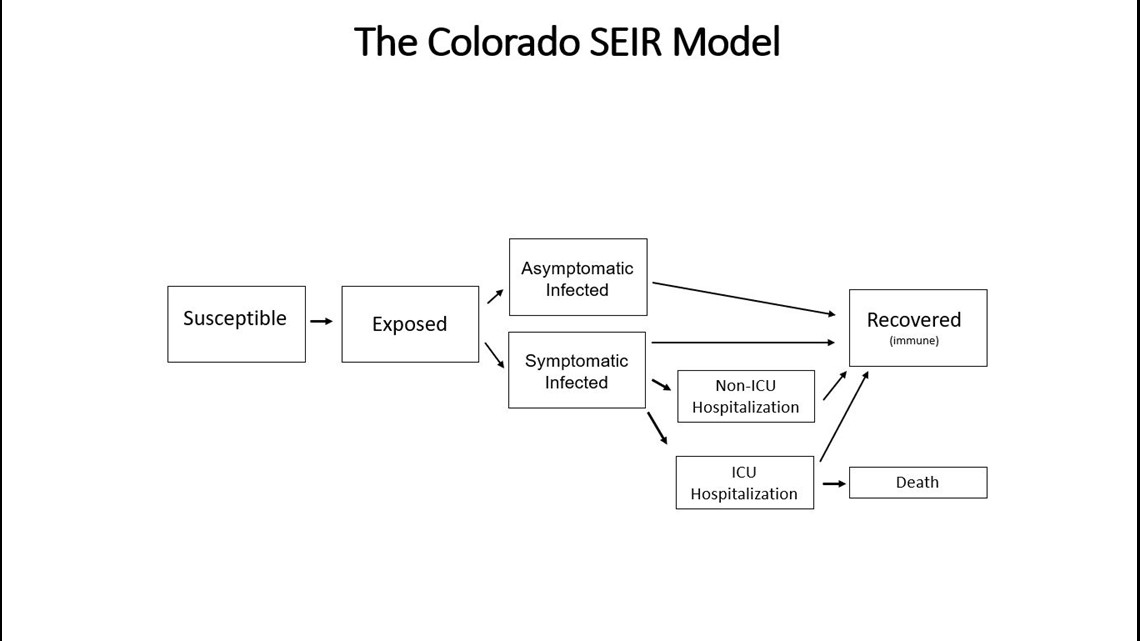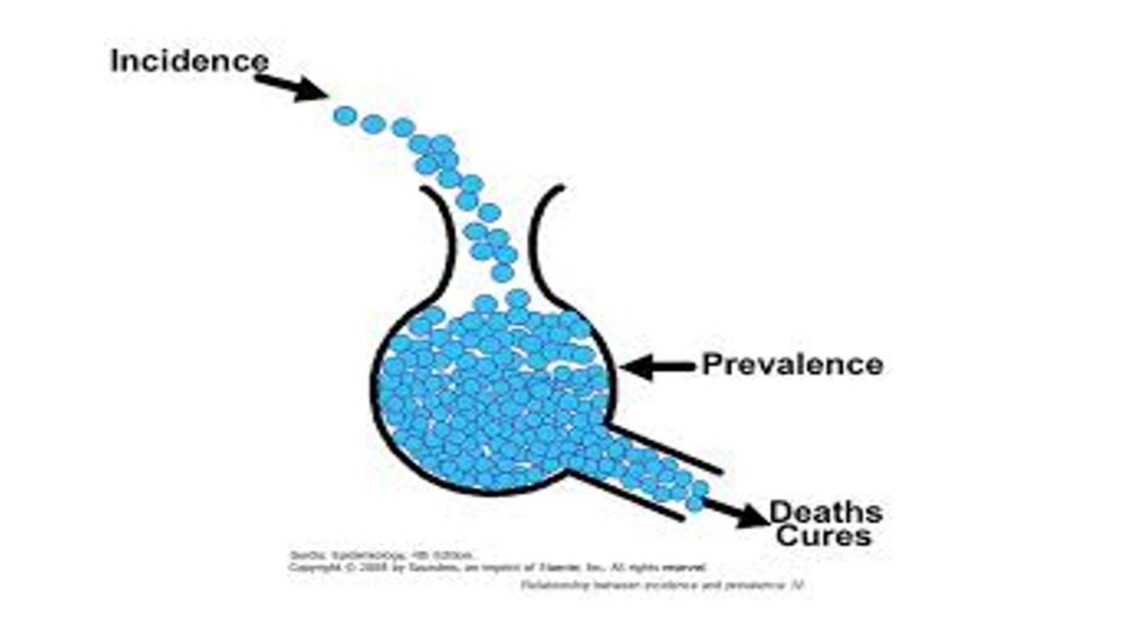DENVER — There are 1 in 40 Coloradans contagious with COVID-19.
That statistic comes from the bottom of a news release provided by Democratic Gov. Jared Polis on Monday.
That represents 2.5% of people in Colorado.
On Nov. 24, the statistic was 1 in 41.
On Nov. 15, it was 1 in 110.
On Nov. 5, it was 1 in 100.
And back on Aug. 11, the state reported 1 in 900 people were contagious with COVID-19.
How does the state figure that out?
"We use this SEIR model. Susceptible, Exposed, Infected, Recovered, or frankly, Recovered or Deceased," said Dr. Jonathan Samet, dean of the Colorado School of Public Health.


The model takes into account asymptomatic infected people, as well as symptomatic people. Part of the math involves the amount of time someone spends in the hospital. The amount of time someone is ill and the length of time in a hospital are fairly constant numbers in the equation. It's the front end that is the trickier part.
"What we are doing is we are estimating the rate of flow into that box of infected individuals," said Samet. "The disease is the disease, so it doesn't matter how many people are getting infected or flowing into that box, they'll come out at the same rate."
The simplest way to explain the equation is through an analogy.
"Think about, for example, putting water into a sink, and some water is flowing out and some water is flowing in. The faster it comes in, the higher the water level, and that's essentially what we're doing with the model. How fast does it come in," said Samet. "We know how long the water will stay (infected period), we know what rate it drains out (recovery or death). So, if it comes in faster and faster and faster and faster, water level rises, same as the "1 in X" goes from 1 in 100 to 1 in 50."
Both positive cases and hospitalizations are down significantly in the last week. So, just as the "1 in X" number will get worse with more cases and hospitalizations, we should expect Colorado's number to move in a better direction based on current figures.
"The hospitalizations have dropped substantially over the last week, roughly, so the epidemic curve is coming under control better, and that "1 in X" number should be rising from 1 in 40 to something else. We look at that every week," said Samet.
Part of the math equation requires adjustment.


Since the state knows not everyone who is positive for COVID-19 will get a test confirming the diagnosis, the equation takes that into account.
"Right now, we think that CDPHE is picking up about 35% of cases. Rough guess for today," said Samet. "We have an estimate of what is the total of cases. That comes from how fast people are being infected and how long they stay infected."
SUGGESTED VIDEOS: COVID-19 Coronavirus

